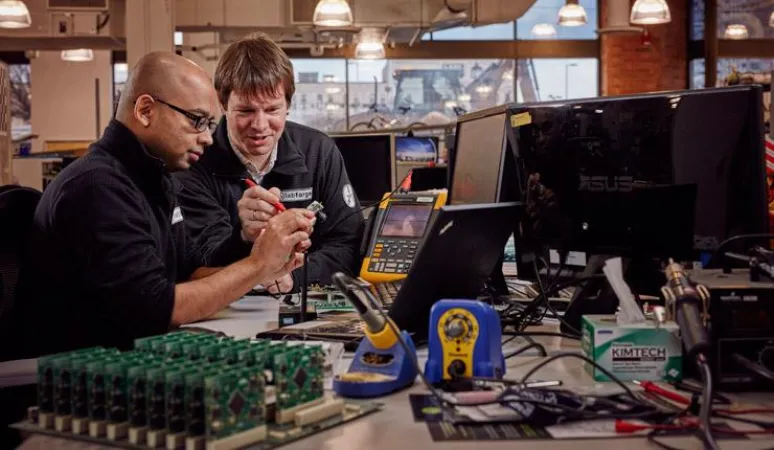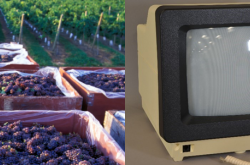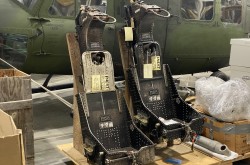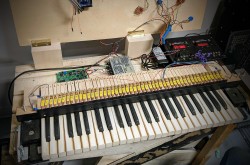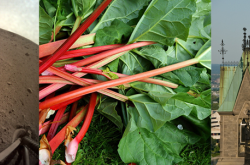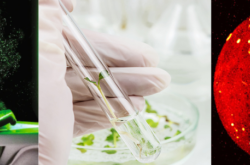New Internet of Things tech monitors and tracks everything
This article was originally written and submitted as part of a Canada 150 Project, the Innovation Storybook, to crowdsource stories of Canadian innovation with partners across Canada. The content has since been migrated to Ingenium’s Channel, a digital hub featuring curated content related to science, technology and innovation.
A Waterloo startup is staking out new ground in the increasingly connected business and security worlds of robots, drones, and machine-to-machine communication with an Internet of Things platform that monitors and tracks using 99.5 per cent less bandwidth and cloud resources.
Today’s security forces, industrial facilities, and robots need constant monitoring to reduce the risk of something failing in a connected world that has little patience for delay. Labforge, a startup based in the University of Waterloo’s Velocity program in downtown Kitchener, Ont., has developed technology that gives companies the near obsessive control they need to compete. The “situational awareness systems” industry, is a market that is expected to reach $17-billion by 2020.
The innovative platform, called Labforge Navigate, uses less bandwidth and cloud resources by being virtually off the grid until a situation arises. It starts with a self-contained grid of cameras and sensors scattered throughout any industrial facility, for example. Not much happens that isn’t picked up by the 2,000 small cameras and even smaller sensors.
“You’re leveraging 2,000 computer systems to process your physical world,” says Yassir Rizwan, a University of Waterloo graduate. “You know where your forklifts are, you know where your forklift drivers are. You know where individual bins are, or what vibrations are going through on every single box.”
Rizwan and Thomas Reidemeister, another Waterloo graduate, are the chief executive officer and chief technology officer respectively of Labforge. The company’s chief scientist is Sebastian Fischmeister, an associate professor in the Department of Electrical and Computer Engineering. Sarah Ford, Labforge’s chief operating officer, is a former United States Marine Corps captain and a Harvard Business School scholar.
Labforge evolved from work in Waterloo’s labs
Labforge develops low-power, long-life sensors and cameras that provide “situational awareness” for robotics and commercial and security purposes. Its platform, Labforge Navigate, is a system that evolved from work done in Waterloo’s mechatronics and electrical and computer engineering laboratories.
Situational awareness tracks the position and condition of things and people, and the objects around them. The trouble is, it can churn out a lot of raw data that runs up costly charges as it flows to cloud services, gets processed and returns as useful information.
Labforge uses edge computing, storing data locally in the technology packed into its Big Edge and Small Edge platform, depending on the use case. The systems do big data processing, with machine learning and computer vision on-board. It still uses data networks, but the information, being less, consumes 99.5 per cent less bandwidth and cloud resources. Navigate also operates in areas where the GPS (Global Positioning System) cannot penetrate.
Labforge situational awareness tech saves money
“The cloud is still there, but we take out all the heavy computing,” Rizwan says. “No flow of heavy data and not computing in the cloud means saving a lot of money.”
Labforge formed at the University of Waterloo in December 2013. It began as an educational solution to train students to use embedded systems — small computers that run machinery. Students could remotely tilt or balance a beam and ball by coding commands according to “situational awareness” information fed by a camera facing the instrument. Experiments could be done without crowding students into a lab.
The company saw other purposes for the technology. Fixed or mobile, its sensors can detect such things as water leaks and overheated machinery. Slightly larger than a book of matches, the sensor units run for years without a battery recharge.
Its Big Edge cameras, smaller than a deck of cards, have fixed applications, too. But they can also be worn, relaying data points back to an operations centre to position the wearer within a 3D map of the surrounding space — without using GPS or any pre-set infrastructure.
It’s an attractive tool for police and security purposes. Initially, Labforge placed much of its focus on that market. Now about 80 per cent of its business comes from industrial/commercial clients; 20 per cent from law enforcement and security.
“We decided to use industrial applications, robotics and shorter sales cycles, to build up the platform, as we continue to pursue the long term security markets” said Reidemeister. “It works out pretty well. Without having raised a cent of external investment, we had pretty significant revenue in 2015.”



